Challenges of Starting a Small Cattle Farm
The vast open pastures and rolling hills of cattle country hold an enduring allure for those who dream of launching their own small-scale cattle operations.
Drawn by visions of a pastoral lifestyle in harmony with nature and animals, many aspiring ranchers seek ways to turn their backyard hobby farms into modestly sized, family-run cattle businesses.
Yet transforming that countryside fantasy into reality often proves daunting. Behind the bucolic image lie countless hurdles—financial, practical and regulatory.
Romantic notions collide with infrastructure demands, market realities, animal husbandry learning curves and unpredictable forces of nature. Still, with grit, resilience and the right mindset, it’s possible to gradually build a successful cattle farm that sustains your passion while delivering returns.
In this comprehensive guide tackles the multifaceted challenges of getting a small cattle farm up and running. By outlining key considerations around land, livestock, economics, marketing and more, it provides an unvarnished look at what’s required to make your agricultural venture vision a functioning—and rewarding—reality.
Let’s start by examining the motivations driving small-scale cattle farming dreams and how emotional expectations may differ from on-the-ground demands…
The Dream and the Reality Check
1.The Allure of the Farm: Understanding the Joys and Motivations Behind Starting a Small Cattle Farm
Wandering among grazing cattle and rolling pastureland stirs up sentiments of freedom and tranquility in the bucolic imagination. Generations have cultivated idyllic fantasies around cattle farming and pastoral ranch life far from crowded cities.
For cattle farm dreamers today, that image of wide-open spaces merged with purposeful work and close bonds with animals holds tremendous appeal.
Beyond romantic notions though, small-scale cattle operations offer tangible opportunities as functional family businesses. Raising beef and dairy cows can generate farm-to-table food, breed stock, supplemental income through product sales and valuable services like grazing rental.
Plus, hands-on livestock work builds practical skills and instills time-tested virtues like responsibility, diligence and capability derived from stewarding the land and caring for animals.
When envisioning starting their own farms, aspiring ranchers tend to focus on the rewarding aspects of cattle husbandry—watching calves born, nourishing animals, conveying know-how to the next generation.
But in reality, every pastoral joy comes earned through backbreaking labor, scrupulous management and an endless barrage of unforeseen complications.
Thus, while the motivations are noble, transforming cattle farming dreams into reality requires an honest reckoning with real-world pragmatism too.

2. From Romantic Vision to Practical Plan: Setting Realistic Expectations and Assessing Your Resources for Success
In an idealized view, owning a small cattle farm means picturesque red barn vistas and lazy days among happy, healthy cows. Real-world cattle farming involves mucking out stalls, stretched budgets and baling hay from dawn to dusk in the height of summer.
With agriculture, perhaps more than any other enterprise, practical success depends on foresight and understanding. Savvy cattle farmers emphasize planning, informed decision-making and carefully weighing options. They stick to budgets, leverage available tools and constantly evaluate conditions and responses.
Before buying your first calves, take time to assess your resources—and limitations honestly.
Ask yourself:
- What exactly do I want out of cattle farming (personal fulfillment, side income, full-time business etc.)? How realistic are those goals?
- What is my agricultural experience level? Do I require further hands-on education?
- What types of cattle align best with my land, water resources and climate conditions?
- Who will help provide labor, expertise and day-to-day functions like feeding, health checks and enclosure maintenance?
- What are the estimated costs involved for things like fencing, housing structures, breeding stock purchases, livestock supplies, machinery and supplemental feed? How will I cover them?
With eyes wide open about the practical implications of your cattle endeavor, you can determine scale, set targets and budget appropriately.
Every prospective farmer emphasizes excitement and future dreams. Successful ones balance that by assessing resources, visualizing systems and planning for realistic outcomes too.
3. Land, Labor and Livestock: The Key Pillars of Your Farm and Navigating the Challenges of Each
When raising cattle, you require the right land base to supply adequate space, grazing material and shelter. You need reliable labor—your own or hired—to handle daily functions like feeding, pen cleaning, animal health checks and repairs.
And you must learn extensive skills in animal husbandry, ranch management and understanding cattle biological needs.
Mastering even one pillar poses difficulties for fledgling operations. Getting all three aligned, while not insurmountable, can overwhelm novice ranchers. Examine the core domains below to grasp their centrality in running any cattle endeavor.
Land:
For any scale cattle farm, assessing location and acreage factors helps match stocking rates to the carrying capacity of your land. Elements like:
- Pasture/rangeland quality and quantity
- Water availability
- Geography/topography
- Existing fencing and facilities
- Local zoning and bylaws
Understanding these variables allows you to balance animal units with existing ecosystems. It enables planning around land management requirements too like rotational grazing, enclosure design, winter feed production and more.
In an ideal setup, you would own your acreage free and clear. For new ventures starting out, land acquisition carries huge financial barriers. Alternative arrangements like leasing pastureland can ease initial costs. But it still requires location scouting to find spaces suiting your needs.
Labor:
Cattle perform many natural behaviors when left on pasturelands or rangeland. But their wellbeing still depends greatly on human caretakers to supply supplemental feed, monitor health issues, assist births, maintain facilities and perform many hands-on production aspects.
For small-scale ranchers, that labor falls overwhelmingly on your own shoulders—and those of your family and helpers. At times, like calving season, it becomes an around-the-clock commitment to keep watch on expectant cows.
Before jumping in, know exactly what duties your cattle will require and who can realistically provide the sweat equity. If relying on family assistance, honestly assess their availability and willingness to actively contribute.
Livestock:
What breed or class of cattle best aligns with your geographic location, climate, market objectives and skill level? Common types range from Angus for beef production to Jersey and Holstein in the dairy category.
Along with breed selection, you need working knowledge of things like:
- Animal health basics
- Vaccination, parasite control, lameness prevention protocols
- Breeding methods based on your goals
- Birthing assistance
- Nutrition needs and pasture/feed management
- Understanding signs of illness, distress and disorders
Learning husbandry skills never stops as you gain first-hand experience. But hands-on education with mentors allows you to start building proficiency from day one. Understanding cattle bio-mechanics empowers you to assess conditions, make management tweaks to optimize outcomes and ensure humane handling.
Grasping these core pillars gives you a framework for evaluating options and drilling into operational details covered next.
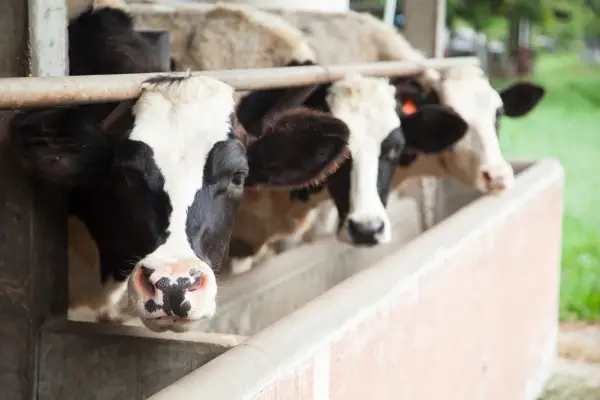
Hurdles in the Pasture – Financial and Operational Barriers
Beyond conceptualization, what it really takes to translate a cattle farming vision into reality comes down to dollars and cow sense. The finances must work at every phase while the operations side needs structure and savvy livestock management. Here we detail the monetary and functional barriers involved in getting situated on your own spread.
1.The Financial Fence: Securing Funding, Managing Costs and Navigating the Economics of Small-Scale Operations
Profit clearly motivates some cattle producers. But for smaller breeders, success metrics lean more toward enjoying a rural self-sufficient lifestyle. Either way, the numbers must eventually add up. So examining budgetary realities ahead of time helps set targets for sustainability.
Key monetary considerations before you begin include:
- Startup costs – These range from property procurement, cattle purchases and facility/fence construction to equipment like tractors, bailers and livestock trailers. Just getting started requires serious capital most newcomers lack upfront.
- Operational expenses – Ongoing costs for feed/supplement sourcing, veterinary needs, repairs/maintenance, labors, fuel, utilities and unforeseen issues easily add up too. Once cattle arrive, the bills keep coming.
- Income variability – Beef and dairy prices fluctuate constantly based on market conditions. And Mother Nature doles out droughts, floods and storms that influence yields regardless of your planning. So cash flow unpredictability remains a recurring threat.
With high upfront and recurring costs plus revenue uncertainties, new cattle farms find it hard to turn any profit in the first years. Pursuing financing means either accruing crushing debt loads or securing investors who’ll expect timely returns.
So how do you surmount the financial fence? Combinations of the following help young ventures balance stability with growth:
- Seeking community pastureland leases or land trust deals to offset property buy-in
- Prioritizing fencing for rotational grazing before large barn projects
- Purchasing bred livestock to demonstrate salable skills with offspring
- Forming collectives to share equipment costs, labor and best practices
- Investigating government grants for sustainability programs like water access or carbon sequestration
With ingenuity and patient capital building, small operators can chart paths toward eventually covering costs and finding profitability. But only with financial savvy and an understanding of livestock production cycles.
2. Building Your Bovine Business: Acquiring the Right Cattle Breeds, Establishing Herd Health and Mastering Animal Husbandry Basics
What cattle breed makes sense for your farm vision and landscape? What veterinary resources do you need in place? And how competent are you in pivotal areas like breeding, birthing and tracking herd data to make sound decisions?
Strengthening your bovine business relies on making the right structural choices then constantly honing husbandry expertise.
Choosing Breeds and Stock:
For establishing meat production flow, fast-growing breeds like Angus, Hereford and Brangus make common starter options. Their genetics help yield more calves and heavier animals at sale points.
In the dairy realm, efficient milk producers like Holsteins and Jerseys rank as popular picks. While requiring higher nutritional inputs, their milk output potential outpaces dual-purpose types.
Whatever class you select, also consider:
- Temperament – Docile breeds integrate best into small operations
- Climate suitability – Heat/cold tolerance varies by breed
- Calving difficulty – Seek genetics indicating easier births
- Cost factors – Purebred stock costs much more than mixed breed
Ensuring Herd Health:
Keeping cattle healthy means going beyond just treating illnesses. It requires establishing relationships with large animal veterinarians to handle needs like:
- Reproduction assistance – fertility testing, pregnancy checks, bull soundness exams
- Vaccination and parasite prevention – Vet prescribed programs to avoid illness
- Nutrition plans – Expert input on feed rations and sources advise
- Birthing supervision – Having an on-call vet for stuck calves or complications
- General herd checks – Semi-annual overall health/condition assessments
Monitoring basics like weight, pregnancy status and diet quality depend on the rancher’s diligence and data tracking. But leveraging veterinary tools and oversight bolsters outcomes.
Building Husbandry Chops:
No amount of research prepares you for cattle handling like direct experience. But certain foundational skills carry weight from day one:
- Restraint techniques – Haltering, securing in chutes/trailers safely
- Comprehending behavior – Reading cattle’s body language and social order
- Administering treatments – Giving injections, medications, drenches properly
- Identifying illnesses – Detecting subtle signs of distress or disorder
- Helping births – Understanding when and how to assist troubled calves
- Handling emergencies – Having protocols, supplies and mentors to advise
Working beside veteran cattle farmers accelerates the learning curve exponentially. But independent study, courses and seminars help amass working knowledge before launching your own herd.
Solid infrastructure and cattle selection provide the backbone but husbandry proficiency makes the difference in sustainable small-scale ventures.
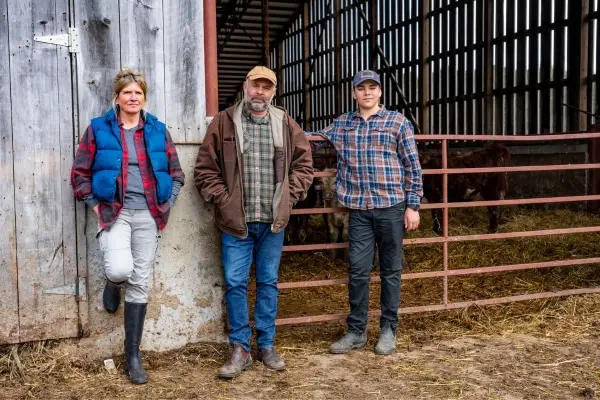
3. Land Leases or Lofty Loans?: Exploring Land Ownership Options and Optimizing Grazing Potential
Expanding your acres or improving infrastructure remains out of reach for most first-generation cattle farmers. With property buy-in costs soaring, even leasing additional pasturelands strains balance sheets. So how do you move beyond simply subsistence farming without financial freedom?
Creative Land Options
Rather than acquiring titled land, consider:
Lease Agreements
If upfront purchases prove impossible, long term leases give you stability without debt obligations. Typical cattle lease terms run 10-20 years to justify infrastructure investments. Compensation includes upfront payments and/or ongoing percentage of calf crops.
Profit-Share Partnerships
Another collaborative route, profit-share deals let land owners benefit from herd returns without active labor. Cattle farmers access acres while sharing sale proceeds.
Land Trusts
Place your property into a conservation land trust granting usage rights to farmers meeting environmental standards. It restricts real estate speculation while securing a low-cost, inheritable asset for your operation.
Managing Existing Land
Without expanding boundaries, optimize grazing through:
Rotational Grazing – Shifting cattle between paddocks boosts pasture utilization and recovery periods.
Winter Stockpiling – Letting certain pastures lie fallow in summer makes forage available during colder months.
Fertilization – Strategic applications of natural fertilizers bolster yield.
Overseeding – Introducing legumes like clover or alfalfa into native grasslands increases nutrition.
Innovative models and smarter land management stretch limited acres while controlling expenses. That frees up resources for critical operating costs covered next.
4. Feed and Fodder Frenzy: Sourcing and Managing Nutritious Feed While Balancing Cost and Sustainability
Well-fed cattle deliver healthier calves, richer milk and heavier sale weights. But supplemental feeds prove expensive for small ranchers. Without volume discounts, single-farm sourcing carries financial impacts.
You face several sourcing options based on your budget, principles and livestock diet needs:
Purchased Feeds – Convenience wins over cost for packaged grains, formula feeds, protein pucks and hay bales picked up from feed stores and suppliers. Budget for shrinkage waste too.
Contract Growing – Pay local farmers to raise crops like corn silage, cereals or hay exclusively for you based on a set contract price. Weather vagaries still affect yields.
Co-op Buying – Band together with regional cattle producers to place collective feed orders. Scale lowers per unit price but requires coordination.
Homegrown – Raise portions of your own supplemental crops, forage and hay for self-sufficiency. Needs land, equipment and farming expertise.
Ideally on small operations, pasture grazing satisfies >50% of dietary needs. But purchased feeds often fill gaps in protein, energy and minerals. One cost-saving trick involves feed testing all sources to formulate least-cost balanced rations. It prevents overpaying to address nutritional deficiencies.
No model negates feed bills. But well-managed pastures aligned with seasonal ready-feeds fine-tuned to growth stages and lactation demands help limit purchased volumes. Get creative, run trials and partner up to keep your animals well-fed without breaking budgets.
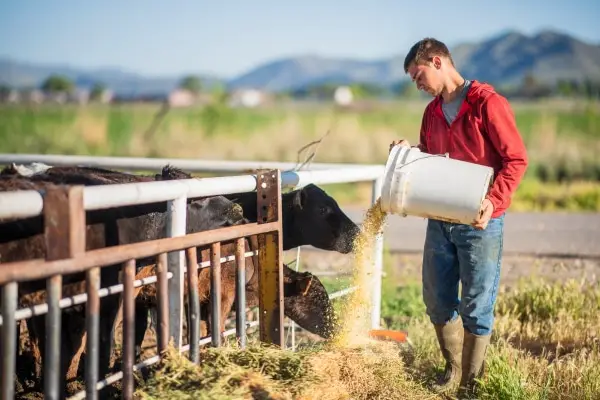
The Wild West of Regulations and Marketing
With livestock, land and dollars somewhat accounted for, marketing and regulations elements complete the picture. Both pose open-ended struggles for first-gen cowfolk seeking simpler times. Master the labyrinth of modern small-farm rules though, and abundant market opportunities await.
1. Permits and Paperwork: Navigating the Legal and Regulatory Landscape of Running a Cattle Farm
Tempting visions of bygone eras when ranchers just put out salt licks, bred their livestock and drove cattle to rail yards persist. Today’s commercial landscape presents a starkly different reality with reams of paperwork, compliance hurdles and bureaucratic oversight.
Regulations around waste systems, chemical usage, animal traceability, farm labor and more aim to ensure public, environmental and animal health. But balancing legal obligations against operating demands taxes cattle farmers immensely, especially on constrained budgets.
Key permitting/compliance aspects to address include:
Zoning Laws – Local ordinances dictate size limits, eligible activity and required setbacks. Permitted uses in agricultural zones differ widely between counties.
Waste Handling – Managing considerable volumes of manure and agricultural runoff requires approved containment systems with strict management rules.
Water Licensing – Depending on region, you may need permits to drill wells, build ponds or pipe irrigation to your land. Allocations depend on watershed volumes.
USDA/State Inspections – Interstate transport and sale of cattle falls under federal oversight with ID tags, health papers and loading facility rules. State inspectors also police operations.
Labor Regulations – Worker safety, housing standards, injury protocols and employment conditions all fall under mandatory laws if you have staff help.
Staying fully compliant with all governing bodies means constant vigilance, up-to-date planning submissions and long drives to far off regional permit offices. It’s frustrating but essential. Enforcement fines or shutdowns threaten hard won progress for the uninformed.
2. Marketing Moo-vements: Finding the Right Markets and Buyers for Your Cattle Products
With pesky paperwork addressed, getting your products in front of buyers presents the next puzzle. Price negotiating with meat wholesalers or dairy processors often leaves small producers at a disadvantage. By diversifying income streams across multiple channels though, you gain leverage while insulating against any one market’s volatility.
Potential Income Sources
Meat Sales
- Direct to Consumers – Farmers markets, buyer’s clubs with premium pricing
- Restaurant Supply – Develop wholesale accounts with chefs focused on local sourcing
- Online Sales – Utilize web storefronts and social platforms to find buyers
- Auction Yards – Regional livestock auctions remain a transaction option despite variability
Dairy Sales
- Direct Consumers – Raw milk sales possible in some states with licensing
- Co-op Processing – Share costs of artisanal cheese/yogurt production
- Contracts – Negotiate prices for selling milk volume direct to processors
- Calf Sales – Dairy steers and heifers recoup income from top genetics
Value-Added Offerings
- Agritourism – Farm tours, petting zoos, hospitality services
- Compost/Soil Amendments – Leverage manure waste for additional revenue
- Artisanal Food Products – cheeses, ice cream, jerky using your milk or meat
- Cattle Leasing – Rent out your herd to other properties for grazing services
- Breeding Stock – Sell bred heifers, cows and semen from top sires
Casting your net broadly makes you less dependent on any one buyer category and allows you to optimize multiple income channels.
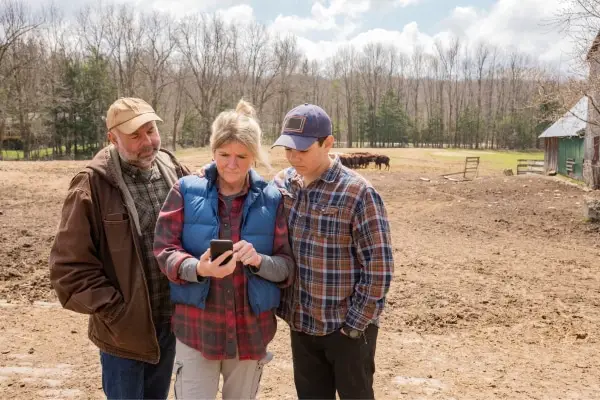
3. Branding Your Bovine Bounty: Building a Strong Brand Identity and Differentiating Yourself in the Market
Commodity cattle earn commodity prices at sale barns. But transform your farm into a recognizable brand beloved by consumers and leverage soars. Building an esteemed reputation around factors like breed integrity, environmental sensitivity and superior food quality lets you charge premiums.
Strategic differentiation options include pursuing certifications like:
- Organic – Certification for qualifying beef and dairy operations meeting strict production protocols
- Animal Welfare Approved – Rigorous standards around pasturing, living conditions and slaughter methods
- Non-GMO Verified – Guaranteed use of non-GMO feeds popular with health-conscious buyers
- Grass Fed – 100% pasture diet certification commands higher premiums in some markets
You can further amplify marketability by conveying your family’s compelling creations story and cattle care ethos through:
- Catchy, descriptive Brand Name – Paints a sensory vision of your offerings rather than a forgettable farm name
- Standout Labeling – Clean, professional packaging design that grabs buyers’ attention
- Farm Website & Blog – Showcasing your multi-generational legacy, regional terroir and animal husbandry
- Social Media – Post gorgeous photography spotlighting cattle in lush pastures and maintain active engagement
Differentiating on qualifiable factors satisfying customer values and masterful storytelling convert one-time buyers into passionate advocates.
4. Tech Tools for the Modern Rancher: Streamlining Operations and Improving Efficiency Using Technology
Amid the bucolic pastures and lowing cattle, rural small holders still live in the 21st century. Harnessing agriculture technology solutions tailors operations, conservation, financials and sales to your needs.
Top tech tools that empower small farms include:
- Herd Management Software – Track cattle pedigrees, medical history, breeding, nutrition and more using cloud-based farm data platforms
- ** drones** – Survey vast acreage, identify vegetation quality variances and find lost livestock with drones
- Smart Fencing – Electric net fencing powered by portable solar panels enables quick, adaptable paddock divisions
- Marketplace Mobile Apps – Meet supply chain partners, manage orders and payments using farmer-focused market platforms
- Precision Agriculture – Satellite- or drone-generated pastureland maps help determine carrying capacity, stocking density and range readiness over seasons
Blending tested traditions with advanced solutions fortifies management, sustainability and ranch economics. Ensuring regulatory, market and technology fluency reorients you from reactive responder toward strategic captain of your cattle destiny.

Riding Out the Rough Times – Overcoming Common Challenges
Hardiness forms the shared virtue of cattlemen who span generations. Through battering storms, devastating diseases and crushing twists of fortune, stalwart resilience and unbreakable spirit carried them through.
Forging your own grit as disasters befall marks a rite of passage for agriculture aspirants. How one handles the roughest rides often determines small farm fortunes.
1. Weathering the Storm: Managing the Impact of Climate and Unpredictable Environmental Factors
Farming’s inescapable reality lies in relinquishing control to Moody Mother Nature’s whims. While seasonal patterns lend some predictability, extreme temperature swings, flooding deluges and drought destroy best laid plans regularly.
For ranchers, wild fluctuations influence factors like:
- Pasture Productivity – Heat, precipitation and early frosts alter grazing grass volumes and periods.
- Cattle Comfort – Access to shade, windbreaks and barn relief essential in extreme weather.
- Feed & Water Security – Drought severely affects yield and stockpile. Blizzards block access.
- Mud Management – Saturated soils destroy land, risk infection and prevent grazing ability.
- Pest & Weeds – Climate impacts dramatically shift infestation zones and growth seasons.
You can mitigate effects through:
- Infrastructure like irrigation, sturdy fencing and shelters
- Fungal/weed prevention protocols
- Stockpiling excess bales pre-winter
- Planning paddock rotation for flexibility
- Customer contracts protecting some revenue
But despite best preparations, weather wrecks plans with regularity. Building cash reserves allows absorbing short-term hits. Long term, accept off-years as inevitable rather than seeing your competency shortcomings.
2. Predators and Pestilence: Protecting Your Herd from Disease and Animal Threats
Virulent viruses, pathogenic bacteria, parasites and predators all menace vulnerable livestock. Just when you stabilize conditions, invisible agents unleash chaotic suffering.
Disease Defense
Common cattle afflictions like ringworm, pinkeye, scours and blackleg require containment plans addressing:
- Quarantine handling
- Medical intervention protocols
- Disinfection processes
- Veterinary guidance
Equally vital, preempt threats by:
- Adhering to herd vaccination schedules
- Isolating and testing incoming stock
- Monitoring for illness indicators
- Maintaining cleanliness standards
Security Against Predators
Coyotes, wolves, bears, stray dogs and even thieves eye cattle as tempting targets. Combat losses through:
- Perimeter fencing examined for breaches
- Livestock guardian dogs patrolling pastures
- Herd gathering into secure night pens
- Non-lethal startling deterrents like noise & lights
- Tight calves tagging protocols proving ownership
Constant vigilance to notice early signs of sickness contained quickly, plus proactive protective steps to thwart systemic or predatory calamities.
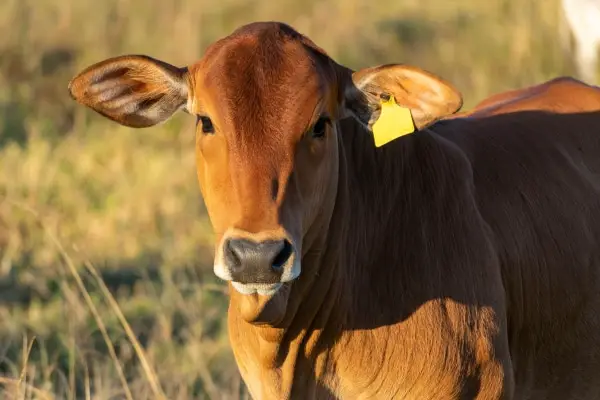
3. Building Resilience: Developing Coping Mechanisms for Unexpected Setbacks and Market Fluctuations
How one deals with upset and uncertainty predicts ranching success as much as cattle know-how. From volatile market prices to the loss of your best breeding bull, radical shifts unleash stress and despair if you lack resilient coping skills.
Mental and emotional adaptability proves vital. When inevitable troubles strike:
Reframe Perspectively
- View setbacks as obstacles to navigate rather than personal attacks
- Look for latent opportunities couched within the challenge
- Leverage setbacks to galvanize creative solution finding
Release What’s Not In Your Control
- Let go of angsting over market whims and climate wildcards
- Funnel energy into strengthening self-determination
- Double down on mastering adjustable variables
Nurture Your Nature
- Carve out downtime immersed in restoring landscapes
- Maintain ties to mentors, community and mental health resources
- Reset through quiet sunrise moments with livestock
Storm-tested cattlemen exemplify the adage of being “tough as rawhide, yet flexible as leather.” Bend rather than break in churning times, while still upholding strength of purpose.
Beyond the Barn Door – Resources and Support Networks
Lord knows cattle folk remain lone cowboys in spirit. But even hard-bitten old-timers understand community matters. Guidance from fellow agriculturalists provides hard-won wisdom. Economies of scale shrink costs when sharing equipment burdens. And moral support during difficult seasons reinforces spirits.
1. Mentorship and Masterminds: Connecting With Experienced Cattle Farmers and Learning From Their Wisdom
Instant credence gets bestowed upon multi-generational ranch legacies. The scarred hands, creased hat brims and rattling old truck doors signal a depth of agriculture abundance. Value that lifetime cultural wealth by finding local icons willing to mentor you.
Seek out advisors who:
- Ranch similar acreage to your scale
- Run comparable cattle breeds & systems
- Confront analogous issues like predators/land costs
- Balance tradition with innovation adoption
Ideal mentees demonstrate:
- Willingness to volunteer labor in exchange for instruction
- Drive to document and apply shared knowledge meticulously
- Patience allowing authentic trust-building over years, not months
- Reciprocal generosity by providing helpful connections/services
Resist proving yourself the hotshot with all the answers. Park ego, listen whole heartedly and let seasoned agriculturalists guide you.
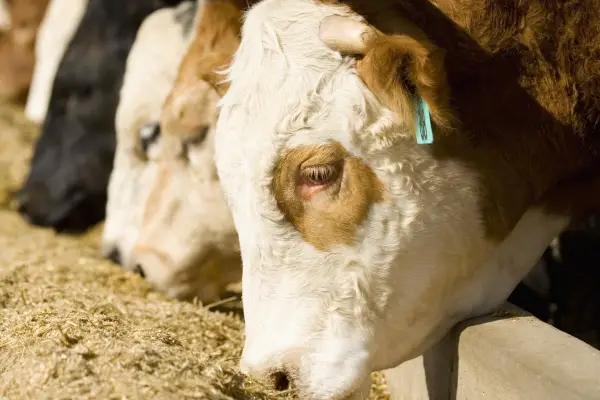
2. Government Grants and Assistance: Exploring Financial and Technical Support Programs for Small Farms
Scouring state and federal programs delivers funding possibilities covering needs like:
- Infrastructure – Grants for working pens/facilities
- Conservation – Covers water access, rotational grazing to preserve landscapes
- Research – Test innovations in genetics, emissions reduction, bio-energy
- Business Planning – Free consultations, financial benchmarking tools
- Crop Insurance – Protection against yield losses beyond your control
Many programs specifically target young, female, minority or veteran agricultural entrepreneurs for developmental support too.
Tapping assistance channels requires researching myriad fragmented initiatives across agencies like:
- USDA National Institute of Food and Agriculture (NIFA)
- Your state’s Agriculture Department
- Local County Extension Office or regional Rural Business-Cooperative Service
- University agriculture academic centers
Don’t let lack of grant writing expertise or time deter you. Many government staffers actively help farmers apply and secure funding.
3. Industry Associations and Online Communities: Joining Networks for Knowledge Sharing and Mutual Support
Your cattle stand cautious and alert when isolated, but relaxed and curious amid the herd. Farmers benefit equally from strength in numbers through robust associations tailored to small scale producers including:
- American Grassfed Association – representing meat and dairy farmers committed to 100% pasture-based production
- Hawaii Cattlemen’s Council – championing paniolo heritage to support island cattle culture
- Women in Livestock – empowering females with knowledge-sharing and business resources
- Online forums like Homesteaddit – Districts of indie producers and hobby farmers exchanging ideas
Band together with those navigating similar territory in agriculture and small business. Synthesize takeaways from wider perspectives that improve your own operation. Discover you’re not alone in this quest.
Conclusion:
This realistic overview of cattle farming’s demands aimed not to deter but to arm – shine light on obstacles to illuminate pathways through. When passion drives purpose, challenges shrink in significance compared to the meaning gleaned from living your agricultural dreams.
Each day when your boots hit pasture soil, you vote for a future aligning humanity closer to ecological rhythms. That choice offers empowerment against uncertainty. For storms will assuredly come. Markets will flounder. But with courage matched to competence, the small cattle farmer way endures as a cornerstone of culture.
What’s more, that way of life stands open to all seeking fertile legacies blending tradition with imagination. Its barriers loom large mostly in perception. But seen as towering hurdles to leap rather than walls barring progress, they inspire ingenious solutions.
Your burgeoning cattle ranch brims with possibility and I wish you profound fortune in the odyssey ahead. Recall when storms rage and bills stack why you started on this journey, reconnect to your vision’s magnetic pull. Then appreciate the longhorn steers outside your window, reminding what success looks like on the humblest scale — happy animals nurtured on healthy lands each season anew. That renewable victory offers wealth beyond any market’s measure.


